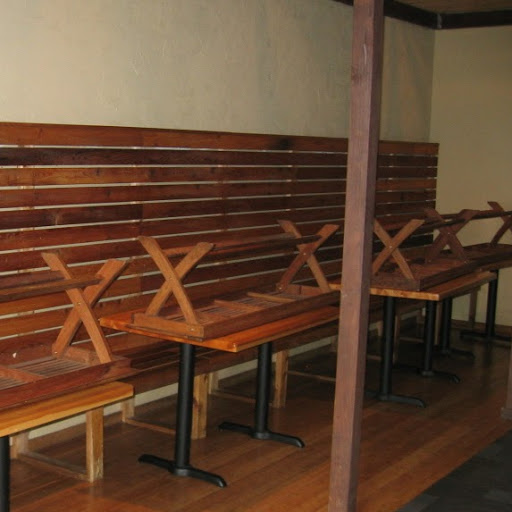Kwok T Lee
age ~61
from Foster City, CA
Kwok Lee Phones & Addresses
- Foster City, CA
- 5946 California St, San Francisco, CA 94121 • (415)2211828
Medicine Doctors

Dr. Kwok C Lee, Fremont CA - DC (Doctor of Chiropractic)
view sourceSpecialties:
Chiropractic
Address:
39159 Paseo Padre Pkwy Suite 101, Fremont, CA 94538
(510)9799659 (Fax)
(510)9799659 (Fax)
Languages:
English

Kwok Cheung Lee
view sourceSpecialties:
Medical Oncology
Pediatric Gastroenterology
Radiation Oncology
Pediatric Gastroenterology
Radiation Oncology
Education:
University of Maryland(1979)

Kwok Ching Lee, Fremont CA
view sourceSpecialties:
Chiropractor
Address:
39159 Paseo Padre Pkwy, Fremont, CA 94538
Lawyers & Attorneys

Kwok Ting Lee - Lawyer
view sourceAddress:
Partners Group (Singapore) Pte Ltd
(945)63148xx (Office)
(945)63148xx (Office)
Licenses:
New York - Currently registered 2010
Education:
University of Sydney
Name / Title
Company / Classification
Phones & Addresses
Myw Holdings, LLC
4425 Fortran Dr, San Jose, CA 95134
Managing
Draco Electronics, LLC
Cable Assembly Trading and Manufacturing · Nonferrous Wiredrawing/Insulating · Ret Misc Merchandise
Cable Assembly Trading and Manufacturing · Nonferrous Wiredrawing/Insulating · Ret Misc Merchandise
4588 Peralta Blvd, Fremont, CA 94536
39270 Paseo Padre Pkwy, Fremont, CA 94538
(510)7977113
39270 Paseo Padre Pkwy, Fremont, CA 94538
(510)7977113
President
Cgl Capital Corporation
601 Montgomery St, San Francisco, CA 94111
President
NEWTREK USA, INC
231 S Balsamina Way, Portola Valley, CA 94028
President
O.K. CHINESE FAST FOOD, INC
Eating Place
Eating Place
1772 Clear Lk Ave, Milpitas, CA 95035
President
LEE & CHAN INC
555 Montgomery St #838, San Francisco, CA 94111
President
SUNNY TIME INTERNATIONAL, INC
350 Sansome St #1030, San Francisco, CA 94104
President
AXON INDUSTRIES INC
389-9 St, Oakland, CA 94607
389 9 St, Oakland, CA 94607
389 9 St, Oakland, CA 94607
Us Patents
-
Precise Uml Modeling Framework Of The Dicom Information Model
view source -
US Patent:7373596, May 13, 2008
-
Filed:Aug 1, 2002
-
Appl. No.:10/210520
-
Inventors:Jingkun Hu - Pleasanton CA, US
Kwok Pun Lee - Ossining NY, US
Alfredo Tirado-Ramos - Amsterdam, NL -
Assignee:Koninklijke Philips Electronics N.V. - Eindhoven
-
International Classification:G06F 15/00
G06F 17/00 -
US Classification:715513, 715523
-
Abstract:A method for mapping a DICOM document into a UML document is disclosed and claimed by this invention. The method includes mapping each DICOM Information Entity in the DICOM document into a corresponding UML class in the UML document, mapping each DICOM IOD Module in the DICOM document into a corresponding UML class in the UML document, mapping each DICOM Macro in the DICOM document into a corresponding UML class in the UML document, and mapping each DICOM Attribute in the DICOM document into a corresponding UML attribute in the UML document. It also includes a UML profile for DICOM information model which guides the UML modeling for all the DICOM IODs. It can also guide the genertion of XML schemas and DTDs from UML models based on this profile.
-
Power Input Terminal Block Housing And Cover
view source -
US Patent:8632359, Jan 21, 2014
-
Filed:Jul 26, 2013
-
Appl. No.:13/952127
-
Inventors:Edward John Kliewer - Sunnyvale CA, US
Kwok Keung Lee - Plano TX, US
Sam David Blackwell - Round Rock TX, US -
Assignee:Cisco Technology, Inc. - San Jose CA
-
International Classification:H01R 13/73
-
US Classification:439545, 439564
-
Abstract:In an embodiment, an apparatus includes a housing and a cover. The housing can include a surface to receive a terminal block to transmit power to an electrical component. A shroud to be inserted within the electrical component can extend away from the housing surface. The cover can have an end for hingedly attaching to the housing. The cover is pivotable relative to the housing between a closed position and an open position. In the closed position, the cover and the housing together form an enclosure for the terminal block.
-
Multi-Functional, Software Configurable Device For Fixed Wireless Networks
view source -
US Patent:20220264681, Aug 18, 2022
-
Filed:May 4, 2022
-
Appl. No.:17/736952
-
Inventors:- Seattle WA, US
Reshma Suresh - San Jose CA, US
Ali Mirkamali - Sunnyvale CA, US
Cheol Su Kim - San Jose CA, US
Omar Fawazhashim Zakaria - Saratoga CA, US
Kwok Shing Lee - San Mateo CA, US
Kalyan Teja Posani - San Jose CA, US -
International Classification:H04W 76/15
H01Q 1/22
H04B 7/0413 -
Abstract:Technologies directed to a wireless network device with a single hardware architecture that supports multiple devices roles through software configuration are described. One wireless network device includes a housing with an RF connector and a circuit board with a first radio coupled to an internal antenna and a second radio coupled to an external antenna via the RF connector. The second antenna is mounted on an exterior surface of the building and coupled to the RF connector via an RF cable. The wireless network device receives a command identifying a device role for the wireless network device and configures itself according to the device role using device setting.
-
Simplifying Power Sequencing For Integrated Circuits
view source -
US Patent:20210405719, Dec 30, 2021
-
Filed:Jun 25, 2020
-
Appl. No.:16/912539
-
Inventors:- Santa Clara CA, US
Venkata Suresh PERUMALLA - Fremont CA, US
Kwok San LEE - San Jose CA, US -
International Classification:G06F 1/26
G06F 13/40 -
Abstract:In various embodiments, rail decoupling circuits that are powered by an always on voltage rail allow a core voltage rail to power up independently of an I/O voltage rail without jeopardizing I/O pad circuits that are powered by the I/O voltage rail. In an embodiment, when the always on voltage rail is powered-up and a chip reset signal is asserted, the rail decoupling circuits drive control inputs of the I/O pad circuits based on default values. When the chip reset signal is de-asserted, the rail decoupling circuits drive the control inputs of the I/O pad circuits based on signals received from circuits powered by the core voltage rail. Because the rail decoupling circuits maintain control of the I/O pad circuits until the chip-reset is de-asserted, the core voltage rail can power up at any time before the chip-reset signal is de-asserted irrespective of when the I/O voltage rail powers up.
-
Surface-Link Antenna Architecture
view source -
US Patent:20200021038, Jan 16, 2020
-
Filed:Jul 13, 2018
-
Appl. No.:16/034938
-
Inventors:- Seattle WA, US
Omar Fawazhashim Zakaria - Santa Clara CA, US
Kwok Shing Lee - Sunnyvale CA, US
Kalyan Teja Posani - San Jose CA, US
Ali Mirkamali - San Jose CA, US
Cheol Su Kim - San Jose CA, US
In Chul Hyun - Saratoga CA, US -
International Classification:H01Q 19/00
H01Q 9/04 -
Abstract:Technologies for wireless network devices with surface-link antenna systems mounted on exterior surfaces of buildings are described. One wireless network device includes a housing with a circuit board and a first antenna port. A processor, a first antenna, a first wireless local area network (WLAN) radio, and a second WLAN radio are disposed on the circuit board. The first WLAN radio communicates with a radio of a client device using the first antenna over a first line-of-sight (LOS) or non-LOS wireless link (e.g., 2.4 GHz) inside the building. The second WLAN radio communicates with a radio of a second wireless network device using the second antenna over a second LOS wireless link (e.g., 5 GHz) that is external to the building. The first antenna is located inside the building and the second antenna is located along an exterior surface of the building.
-
Antenna Switching Circuitry Of A Mesh Network Device
view source -
US Patent:20170222666, Aug 3, 2017
-
Filed:May 13, 2016
-
Appl. No.:15/154314
-
Inventors:- Seattle WA, US
Andrew David Price - Santa Clara CA, US
Kwok Lee - Sunnyvale CA, US
Cheol Su Kim - San Jose CA, US
Omar Fawazhashim Zakaria - Santa Clara CA, US
Varadarajan Gopalakrishnan - Cupertino CA, US -
International Classification:H04B 1/00
H04M 1/02 -
Abstract:Network hardware devices organized in a Wireless mesh network (WMN) in which the network hardware devices cooperate in distribution of content files to client consumption devices in an environment of limited connectivity to broadband Internet infrastructure are described. One mesh network device includes a micro controller, RF radios, and antenna switching circuitry. The antenna switching circuitry, in response to the control signals from a micro controller, selectively couples individual ones of a first set of antennas to individual channels of the set of RF radios to communicate content data with client consumption devices and selectively couples individual ones of a second set of antennas to other individual channels of the set of RF radios to communicate content data with other mesh network devices in a WMN.
Resumes

Kwok Ming Lee
view source
Kwok Lee
view source
Kwok Fun Lee
view sourceYoutube
Plaxo

Tony Kwok Chen Lee
view sourceHong Kong

Kwok Lee
view sourceDeutsche Bank AG
Flickr

Kwok Ming Lee
view source
Elaine Kwok Lee Chin
view source
Kwok Wai Lee
view source
Chuen Kwok Lee
view source
Kwok Lee
view source
Kwok Sun Lee
view source
Kwok Lee
view source
Wai Kwok Lee
view sourceGoogleplus

Kwok Lee
Education:
Massachusetts Institute of Technology

Kwok Lee

Kwok Lee

Kwok Lee

Kwok Lee
Work:
Triatomic
Education:
City unversity of hong kong - Management studies, University of braford

Kwok Lee

Kwok Lee

Kwok Lee
Classmates

Kwok Lee
view sourceSchools:
Sierra Vista High School Las Vegas NV 2001-2005

Kwok Lee
view sourceSchools:
James K. Polk Elementary School Alexandria VA 1979-1983, Pine Ridge Middle School Naples FL 1987-1988
Community:
Billy Mcgill, Martha Goldstein, Kellie Harris, Iris Sinclair

James K. Polk Elementary ...
view sourceGraduates:
Kwok Lee (1979-1983),
Jonathan Deiss (1978-1980),
Marjorie Alexander (1967-1973),
Karen Swanson (1966-1972),
David Price (1967-1971),
Anousheh Sayah (1984-1987)
Jonathan Deiss (1978-1980),
Marjorie Alexander (1967-1973),
Karen Swanson (1966-1972),
David Price (1967-1971),
Anousheh Sayah (1984-1987)

Pine Ridge Middle School,...
view sourceGraduates:
Cassandra Sparkman (1992-1995),
Deanna Barker (1978-1982),
Kwok Lee (1987-1988),
Cheyenne Purcell (2006-2010),
Kelli Linehan (1994-1998)
Deanna Barker (1978-1982),
Kwok Lee (1987-1988),
Cheyenne Purcell (2006-2010),
Kelli Linehan (1994-1998)

Sierra Vista High School,...
view sourceGraduates:
Kwok Lee (2001-2005),
Rheana Hazel (2005-2009),
Anthony Forsythe (2003-2004),
Scott Berke (2002-2006),
Stephanie Anderson (2001-2005)
Rheana Hazel (2005-2009),
Anthony Forsythe (2003-2004),
Scott Berke (2002-2006),
Stephanie Anderson (2001-2005)

Kalani High School, Honol...
view sourceGraduates:
Lee Kwok (1978-1982),
Alvin Goo (1967-1971),
Wesley Chung (1972-1976),
Andrew Dauz (1969-1973),
Roselyn Yagi (1957-1961),
Harold Same Aka Leino (1964-1968)
Alvin Goo (1967-1971),
Wesley Chung (1972-1976),
Andrew Dauz (1969-1973),
Roselyn Yagi (1957-1961),
Harold Same Aka Leino (1964-1968)
Get Report for Kwok T Lee from Foster City, CA, age ~61











